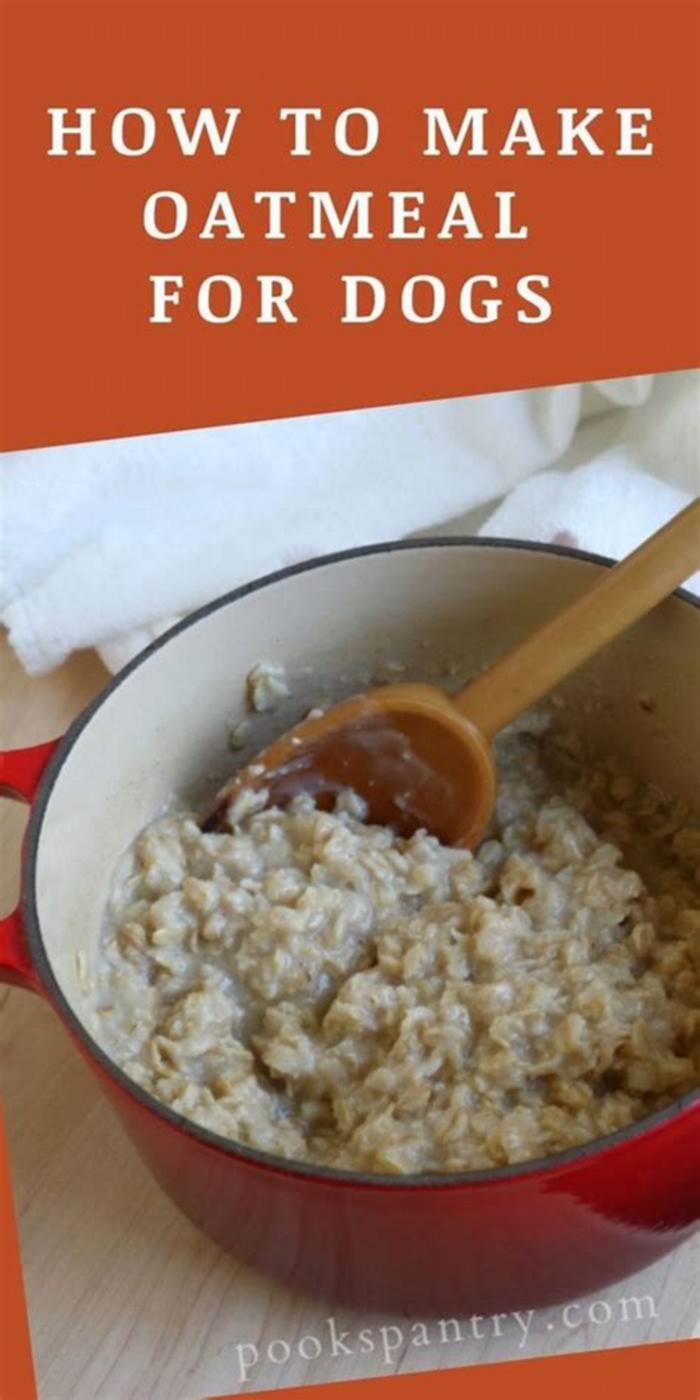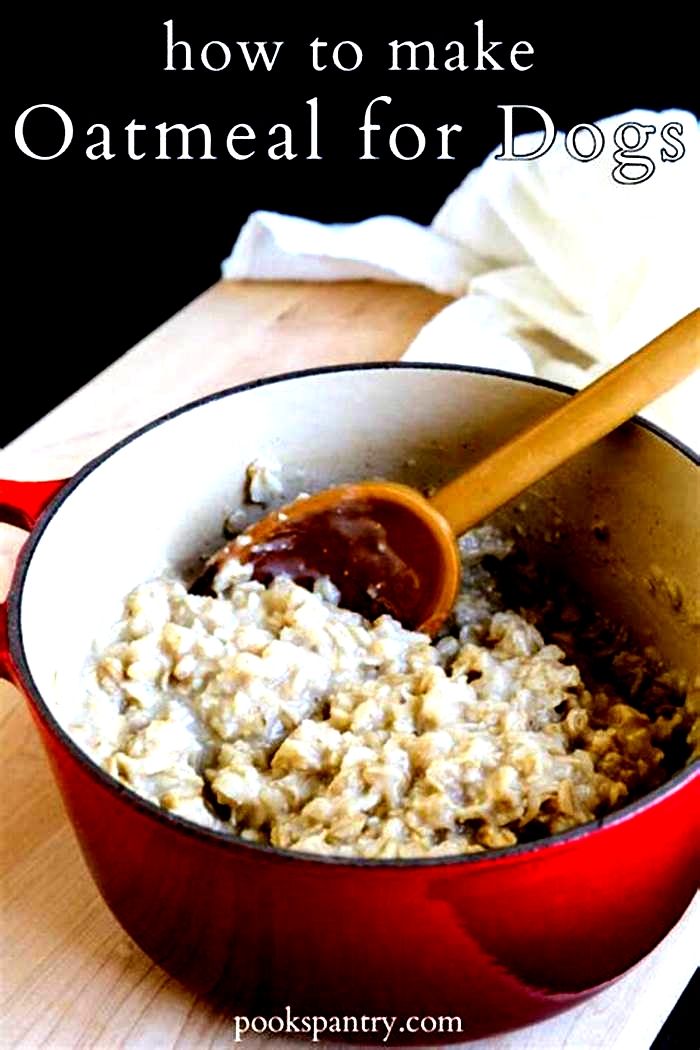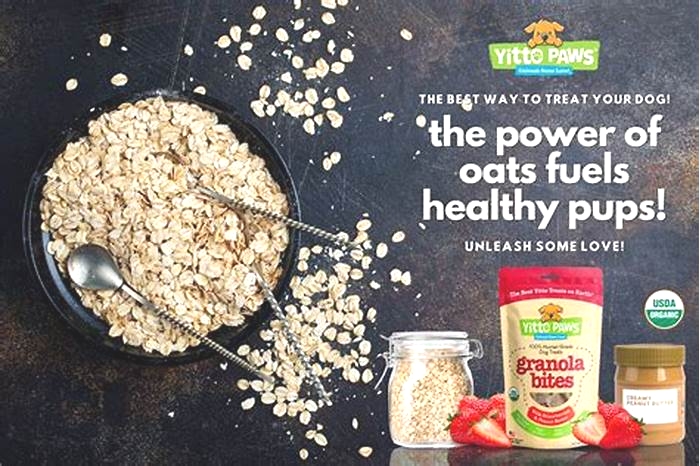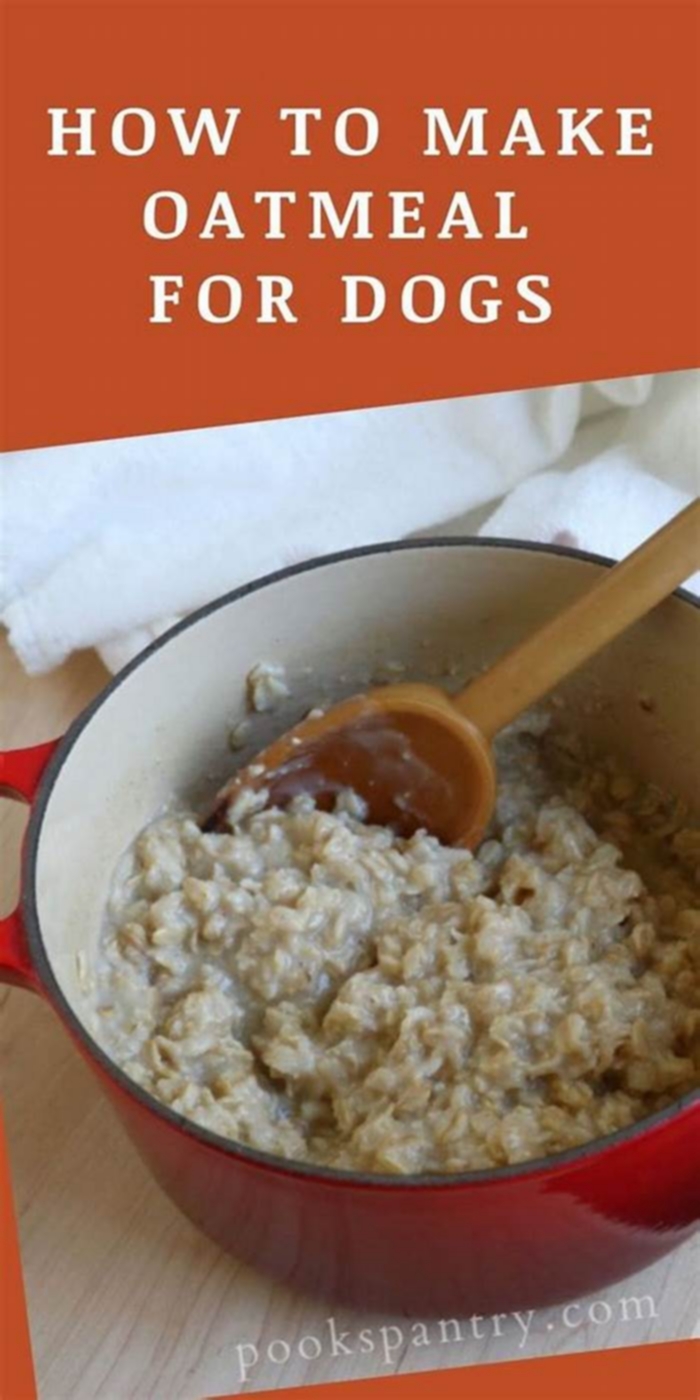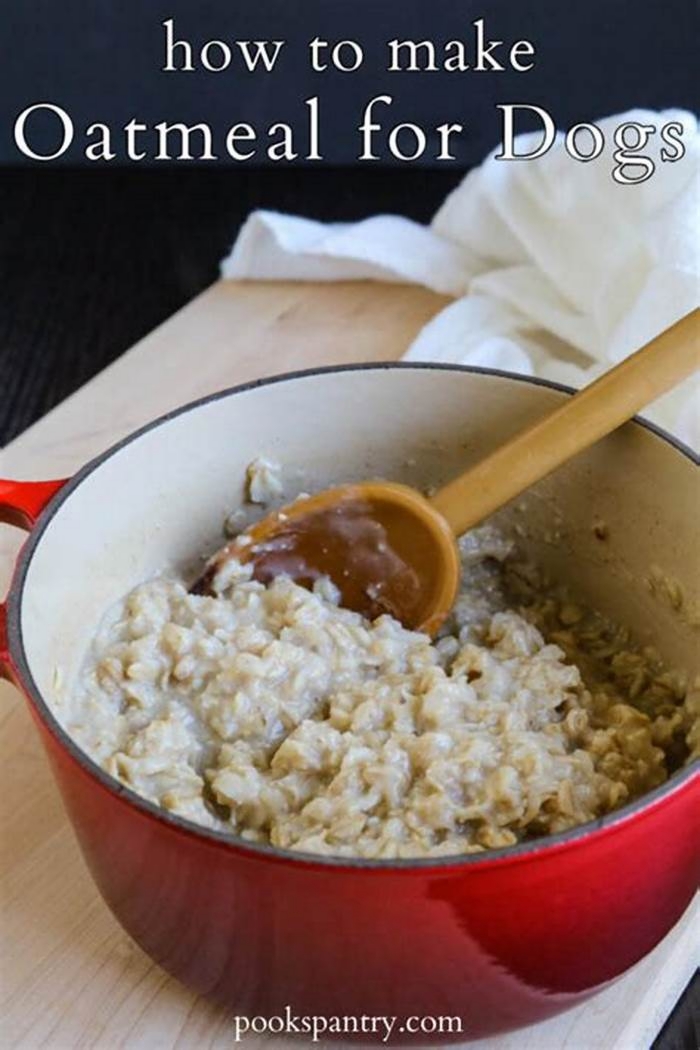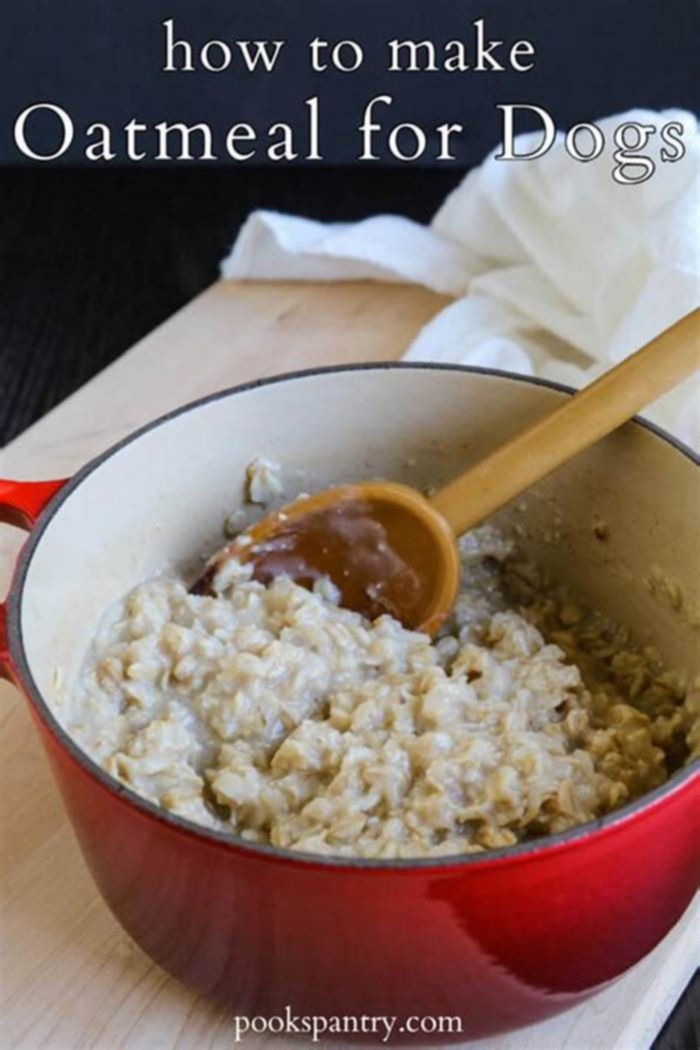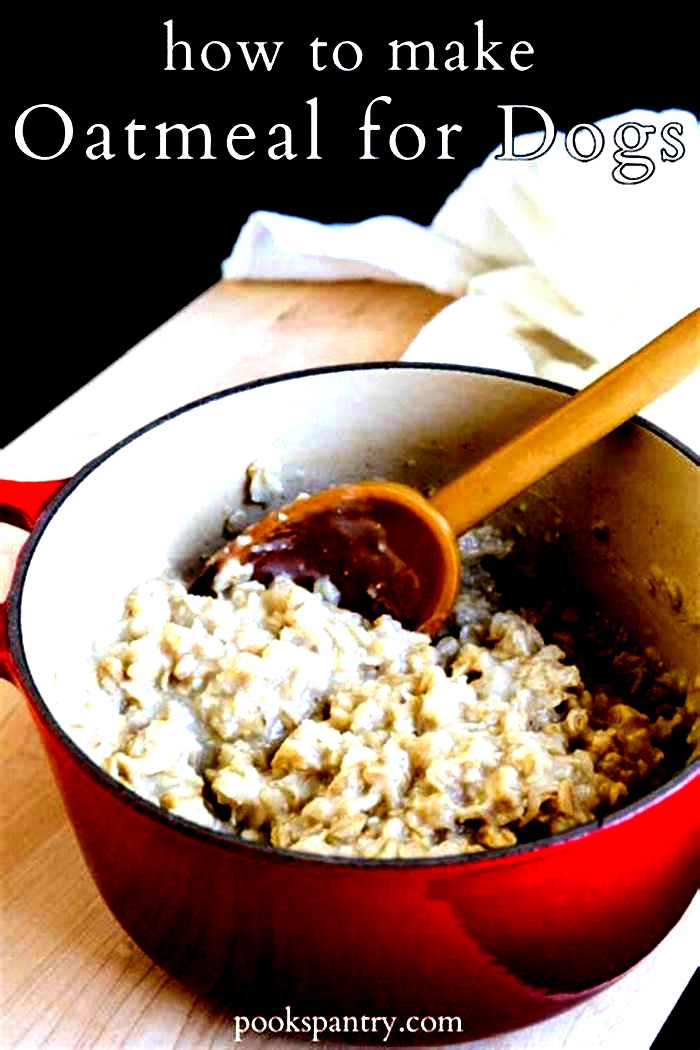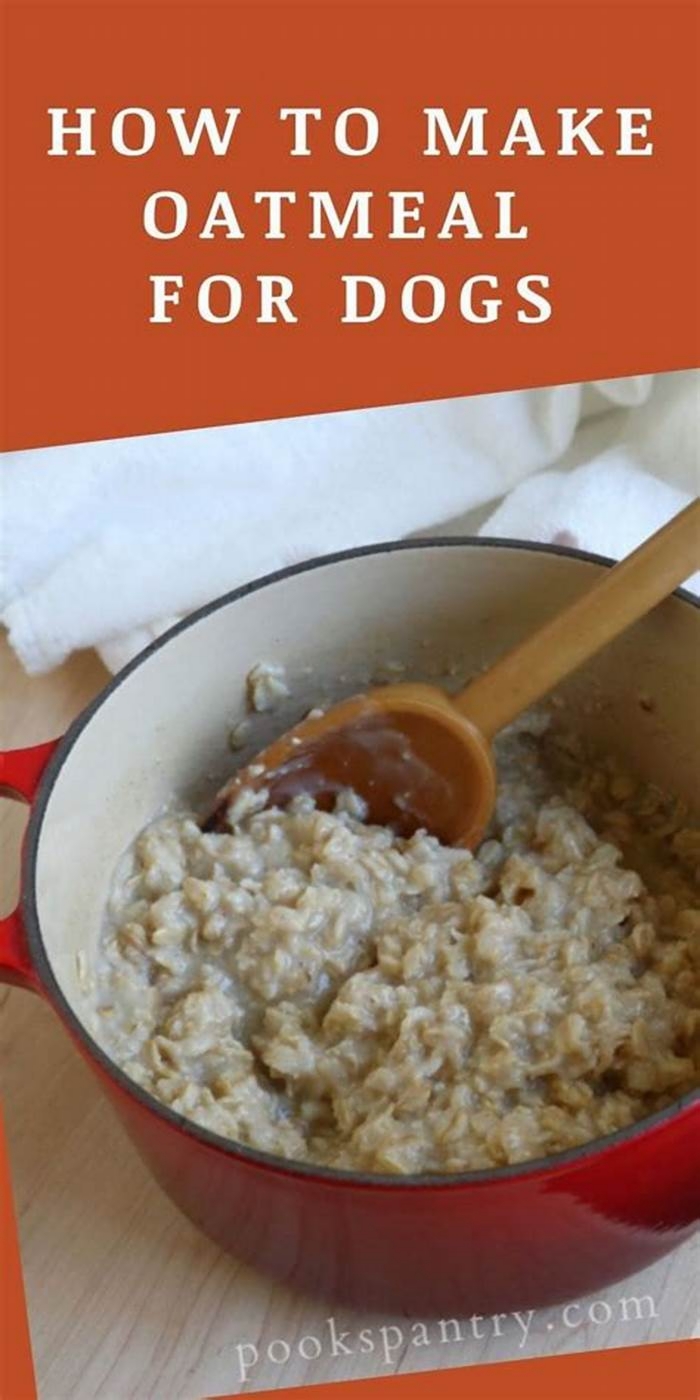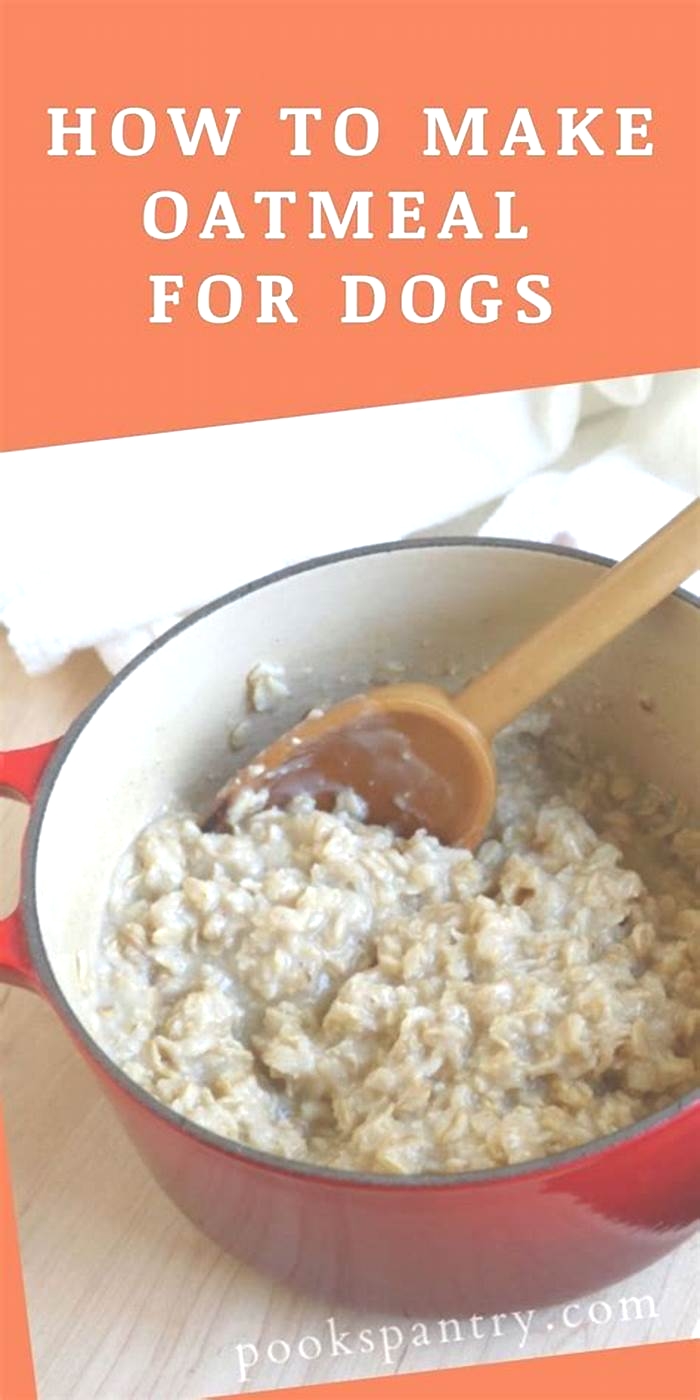is oatmeal good for dogs with ibd
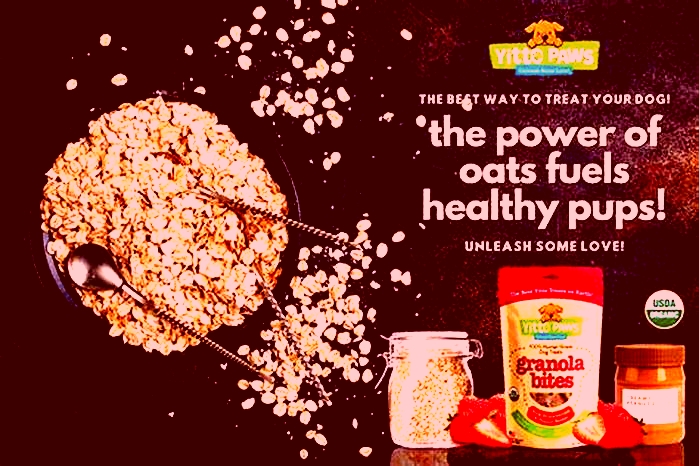
Nutritional Management of IBD in Dogs
An interview with Lauren Adelman DVM, DACVIM:
Dr. Adelman is a veterinary internal medicine specialist located in Vancouver, British Columbia. Dr. Adelman currently works at the Canada West Veterinary Specialists and has a special interest in minimally invasive procedures, gastrointestinal diseases, and urinary disease. You can find her on Instagram @the_tinyvet where she educates pet owners and shares the behind-the-scenes of being a veterinary specialist.
What is IBD?
Inflammatory Bowel Disease is a group of chronic GI disorders characterized by persistent or recurrent GI signs and mucosal inflammation on histologic exam. All areas of the GI tract can be affected and numerous types and forms of IBD exist. Lymphoplasmacytic form is the most common but other forms include those with eosinophilic, neutrophilic,and granulomatous infiltrate. The severity of the disease can also differ. In the most severe cases, inflammation can lead tomalabsorption and maldigestion resulting in protein loss through the gut (protein-losing enteropathy).
The key is that IBD is a histologic diagnosis meaning that it can onlytruly be made on GI biopsies. A lot of people diagnose IBD based on clinical signs alone, however, this is not technically correct.
The cause(s) of IBD is/are unknown but likely involve interactions between the GI microbiome and dysregulated responses in a genetically susceptible individual. The genetic basis of IBD in certain breeds of dogs has been well recognized (I.e.GSD, SCWT, Basenji etc). The role of dysbiosis and abnormal innate immunity have also been recognized.
What are the clinical signs of IBD?
Clinical signs can be quite variable and may include vomiting, diarrhea, weight loss, changes in appetite, flatulence,poor body condition, dehydration, and abdominal pain. In mild cases, weight loss may be the ONLY clinical sign. In severe cases of protein-loosing-enteropathy or PLE, patients may present with pleural and abdominal effusion and be quite sick.
Often are you treating suspected IBD cases or fully diagnosed IBD cases in your practice?
As a specialist, I see referral cases from other veterinarians. Oftentimes these dogs come with a presumptive diagnosis of IBD based on clinical signs alone. The dogs have also usually been placed on several different treatments prior to referral. I would say that of all my IBD cases, about half are suspected and the other half are actually confirmed on biopsy. When I get a case earlier on inthe process OR in a very young dog, I encourage endoscopic biopsies to obtain adefinitive diagnosis. This gives me the best chance of successfully managing the case moving forward. Also, in older dogs, biopsies can be really important in ruling out other differentials such as lymphoma.Although not common in Vancouver, biopsies can also be important to rule out infectious etiologies like a fungal disease.When I see dogs thathave been tried on several different treatments, often including steroids, things can be much more difficult. I usually tell owners in these scenarios thewaters are muddied so obtaining a definitive diagnosis with biopsy may bedifficult.
One thing that is important to realize is that if you biopsy a dog with IBD and a dog withfood-responsive enteropathy the biopsies are going to look identical. But these are technically 2 separatedisorders.
Patients with food-responsive enteropathy (food allergies or intolerance) can only be diagnosed with food elimination trials. Therefore, before pursuing diagnostics such as endoscopic biopsies, it is crucial to me to make sure a patient has been through a strict food elimination diet trial prior to recommending endoscopic biopsies.
How often do you see IBD at your veterinary hospital?
IBD is one of the most common gastrointestinal disorders that we treat in dogs. We see it very commonly.
When pets are diagnosed or suspected of having IBD what type of diet is generally recommended?
Treatment of IBD typically involves therapeutic trials and may consist of a combination of dietary, antimicrobial and immunosuppressive therapy. Some dogs require all the above, with other dogs can be managed on diet alone.
To start, there is no evidence to suggest that one particular diet is the best for patients with IBD. But generally, we approach it as we would in any dog with suspectedfood allergies. As you know,there are no good tests for food allergies manifesting as gastrointestinal signs in dogs. The only way to test is to perform a food trial. In the vast majority of cases, when a dog develops a food allergy, it is directed against the meat or protein source in the food. In managing a dog with a potential food allergy, we would therefore want to manage the type of protein fed.
Options include feeding a diet based on a single protein source that we can be sure that the patient has never been fed before (e.g. Rayne Clinical Nutrition kangaroo diet or home-cooked novel protein diet), feeding a diet based on a protein that is unlikely to cause a reaction (e.g. Royal Canin Anallergenic available from a veterinarian, in which the protein is derived from feathers), or feeding a hydrolyzed protein diet in which the protein source cannot be recognized by the body (e.g. Royal Canin Hypoallergenic HP, Hills z/d). There is currently no evidence to say which approach is better so it really comes down to the personal preference/experience and the patient (I.e. what they like to eat, comorbidities etc). Any diet transitions should be made slowly over a period of 5-7 days, gradually decreasing the amount of the old diet and increasing the amount of the new diet.
Unlike diet trials for dermatologic disease, diet trials for GI disease are MUCH shorter. Generally we can get an idea within 2 weeks if the diet is going to be appropriate.
Home cooked diets are also a great option for novel protein diets. One of my favourite diets is STP (sweet potato, tilapia and pasta) diet which I balance using BalanceIT.com. I find this diet to be highly palatable and it has the added benefit of being markedly fat restricted. So it is really great for dogs with IBD and concurrent lymphangiectasia (think Yorkies) and also for dogs with concurrent fat responsive conditions like pancreatitis (think Schnauzers with IBD). If you want a hypoallergenic diet that is fat restricted that is not home cooked, your best bet is Purina HA. It has the lowest fat of any of the hydrolyzed protein diets. Rayne low fat kangaroo is another option if you are going the novel protein route.
What type of macro composition is ideal for dogs with IBD?
I addressed that above a bit. There is noone size fits all. It really depends on the dogs underlying condition (I.e. mild IBD vs PLE, presence/absence of lymphangiectasia and comorbidities). I would say that a LOT of these dogs require low-fat diets. In these cases I try to stick with <20-25% fat ME.
Ive read that the macro composition recommendation may change depending on the area of the gastrointestinal tract that is affected is this true?
This is not something I am aware of but maybe it is just reflecting where certain conditions usually areI.e. lymphangiectasia in the duodenum?
Are there certain ingredients dogs with IBD should avoid?
The common protein allergens chicken and beef. Additionally, if the dog is immunosuppressed (prednisone and/or other second agents) as part of their treatment, Iwould advise against raw diets as the consequences of any contamination are that much more severe. I have treated my fair share of bacterial gastritis cases in patients on raw food and if the patient is immunosuppressed, the consequences could be deadly.
I have read about one study done onCats with IBDwhere they were fed raw and stool quality improved, do we have any studies in dogs that show that a prey-model raw diet to be a good option for dogs with IBD?
Very cool study but it is important to note that it is not yet in a peer-reviewed journal. So I think we need to take this with a grain of salt. I wouldnt use the results of this study to say that raw diets are better for cats (and dogs) with IBD. Further research including placebo-controlled randomized controlled clinical trials that are blinded are needed. I am not ruling out the possibility, I just think more research is needed. However, as I mentioned above, I would NOT recommend raw diets in dogs on immunosuppressive medications.
Do you find better nutritional management of IBD in dogs with one type or brand of diet more than others?
No. I think it depends on the individual pet and their preferences. Common diets I use are RC Hypoallergenic HP, RC Hypoallergenic SP, Anallergenic, Hills z/d, Purina HA, Rayne Kangaroo low fat, home-cooked STP diet, nutritionist formulated/balanced diets.Which I select first depends on what I know has already been tried (oftentimes that knocks a good 2-3 off the list), what type of food they prefer (canned, kibble or home-cooked) and what might be available.
What types of supplements are good options for dogs with IBD fish oil, probiotics, herbs etc?
We dont have solid evidence to support mostsupplement use in dogs with IBD aside from probiotics. The positive effect of probiotics is likely due to the factthat some of these dogs have a degree of secondary dysbiosis. There are manythat would, however, considerprobiotic-responsive enteropathy as a separate degree entity from IBD. I think oftentimes these various forms of chronic enteropathyare blended together and so that is why one dog mayrespondto one thing and not another.
What percentage of dogs will respond to the nutritional management of IBD?
That depends on whether we are talking about suspected or diagnosed cases. I think a lot of thesuspected IBD dogs are actually dogs with food-responsive enteropathy in which case they can respond very well. However in actual confirmed IBD, I usually find that while diet is an essential part of treatment, it is often not the sole treatment modality needed. These dogs often require some degree of immunosuppressive therapy.
What are the steps taken if dogs are not responsive to nutritional management alone?
Ideally? BIOPSIES. Confirm the diagnosis and start other treatments for IBD (steroids, other immunosuppressives etc).
My big takeaway is if something isnt working, dont keep trying to throw thekitchen sink at the patient. Take a second and re-evaluate. Referral is always a great option!
Thank you so much Dr. Adelman for taking the time to do this interview, this was such a highly requested topic! So many dogs suffer from gastrointestinal issues and often IBD is at the top of the list when a dog has chronic loose stools. I am sure so many people found this interview valuable to answering those burning questions regarding this topic.
About the Author: Nikki is a Registered Veterinary Technician (Veterinary Nurse) and Dog Mom with over a decade of experience with dogs and cats. Since graduation from college (BS Biology, Dip. Animal Nutrition, AS Animal Science) she has adopted two mixed breed dogs Ranger and Ash, and has focused her time learning about pet food and nutrition.
Nikki shares information on a range of pet nutrition topics: from how to create a homemade complete and balanced dog and cat food recipes, to how to choose a pet food. Nikki strives to give dog and cat parents the information they need in order to make the best nutrition decisions for their pet!
You should receive your Free Dog Food Recipe Ebook within 24 hours of subscribing! Make sure to check your spam folder. The recipe ebook is over 90 pages long so make sure you have a good internet connection when you go to download it. Afterwards you will receive weekly Canine Nutrition Updates every Tuesday on different topics related to canine nutrition & homemade dog food!
CONTACT ME:

The diagnosis of inflammatory bowel disease (IBD) in your dog can be a challenging diagnosis. Technically, biopsies of the GI tract are required to confirm that this is indeed the disease process. Veterinarians often use the term chronic enteropathy to describe dogs with chronic GI signs like vomiting or diarrhea. These cases may be further defined by their responses to treatment. For example, a dog may have a food-responsive enteropathy.
In many cases, veterinarians will recommend either a novel protein or a hydrolyzed diet approach as a first line of defense to help ameliorate the clinical signs of the disease. The idea around a limited ingredient novel protein diet is to help determine if the disease process is food responsive by changing both the protein source and carbohydrate source in the diet on the outside chance that this is just a food allergy.
Suppose your dog does not respond to a dietary change using a commercial dog food from a reputable company. In that case, many vets will suggest a hydrolyzed diet approach, which is often considered the gold standard in treatment. These diets are made with hydrolyzed protein sources where the protein fragments are so small that they should not aggravate the immune system. Studies have suggested that over half of the dogs on these diets respond positively -- but what about those that dont?
For many cases that do not respond to either limited ingredient novel proteins or hydrolyzed commercial diet approaches, the next option is a limited ingredient home-prepared diet. These home-prepared diets are often formulated to be low fat (to address IBD and protein-losing enteropathy [PLE]) that will be nutritionally complete and may garner a response in some dogs.
Purpose:
To provide a convenient resource for home-prepared diets for dogs suspected of having IBD.
Because most dogs sent to our service have already been tried on limited ingredient or hydrolyzed diets with limited success.
Limitations:
- It is not possible to predict which dogs will respond to a home-prepared diet
- Many IBD cases are not food-responsive and require medical intervention from your veterinarian or a board-certified veterinary internal medicine specialist.
Components:
- We have provided three dietary plans in this post using either a fish source (tilapia), terrestrial mammal (pork tenderloin), or poultry (99% lean turkey) as the means to try a new source of protein that your dog may not have been exposed to and may garner a response.
- The carbohydrate sources in each of these diets will come from rather novel sources and are interchangeable across the diets to provide some options if a dog does not like sweet potato or barley and to provide some flexibility to the diet plans.
- Another addition will be a novel vegetable source oil with a mix of essential polyunsaturated fats and an optional amount of fish oil for those that want to provide long-chain omega-three fatty acids in the diet plan.
- There is also a choice between two vitamin and mineral mixes that can be purchased and are essential additions to the diet.
Sequence for a smooth transition:
- Each of these recipes is designed to supply 300 kcals per 5 kg body weight. This will change for dogs of larger size because smaller dogs generally need more calories than larger dogs. Knowing how many calories your dog needs to consume is essential to doing this properly. Your veterinarian can help calculate your dogs caloric needs.
- For example, a 5 kg Havanese will eat about 300-350 kcals a day while a 30 kg Labrador may only eat 1200 kilocalories daily, showing the disparity between weight categories and true caloric needs.
- If you plan on using one of these diet plans to start a 6-week trial of home cooking (most dogs respond within 3 weeks), you will need to gradually transition from your current diet to the home-prepared daily diet plans outlined.
- This is typically done by starting with the meat, carbohydrate, and oil source without adding the vitamin and mineral mix.
- Typically, one would start with about of the estimated ration needed from the diet plan and of the old commercial food for about 3 days.
- Then if going well, a transition to of the home-prepared ration mixed with of the commercial ration for 3 days.
- If continued success is observed, then using the home-prepared ration at about the daily amount with of the commercial ration would be used daily for three more days.
- By day 10 you will be at the full home-prepared amount that should continue to be fed at full ration from day 10 on.
- Once on the complete home-prepared ration on day 10, you can start mixing in the vitamin and mineral mix please mix in well with the food as these vitamin and mineral mixes taste metallic and may throw off the picky eater. Typically, for example, if quadrupling the recipe outlined for a Labrador who only needs 1200 kcals, you would start with a small amount of the vitamin and mineral supplement (1/4 of the total) and work towards the 2 scoops of Annamaet Enhance over 7-10 days to build the complete and balanced ration.
Usually, a diet like this is fed by dividing the daily ration into two meals, but it can also be provided over more meals per day depending on medication schedule and GI tolerance. If there is occasional vomiting, decreasing meal size with more frequent feedings may improve passage.
Assessing your dogs response to the diet transition:
- The full transition to the new diet will take 2 to 3 weeks. If your dogs clinical signs have resolved, you have achieved success, and your dog can remain on this diet plan long-term.
- If you find that things are generally better but not quite normal, you can try adding a fiber source like psyllium husk to help firm up the stools. The addition of psyllium husk can be from a generic form, or we often recommend Konsyl 100% psyllium husk powder.
- To prevent choking, the dry powder needs to be mixed in well with the food along with a little water.
- As outlined in a per 300 kcal diet, about 1 teaspoon of psyllium husk can improve fecal quality when added to this diet plan.
- If feeding more like 4 times this quantity for an average Labrador, it would be 4 teaspoons in addition to the entire diet plan made for the day.
What if there is no improvement?
- If this transition does not go smoothly and your dog is not improving, we recommend further work-up by your veterinarian.
- If you have been through novel proteins, hydrolyzed diet, and a home-prepared plan of this nature, then it's unlikely that the IBD syndrome your dog is experiencing is likely to be food-responsive.
- From here, you are just looking for a highly digestible, possibly lower fat, commercial food that your veterinarian can recommend from one of the many therapeutic enteric and hydrolyzed diet options. Your veterinarian or board-certified internist will provide ways to help manage the problem with medications designed to alter the immune response and treat GI signs symptomatically. Ask your veterinarian about the available general enteric diets to find the best food solution for your dog.
Why not get a consultation with a nutritionist?
Since 2005, we have been doing these fairly straightforward IBD consultations with mixed success, and there is a certain level of frustration on both the owner's part and the nutritionist's part considering the likelihood for success is such a mixed bag for each dog.
Dog owners who are looking for home prepared IBD diet options need this resource because it can be both very successful for some dogs and relatively easy for the owner to provide, and thus the expertise of a boarded veterinary nutritionist is not required to put together a novel protein diet of this nature. Only when there are multiple disease conditions present does this become more difficult and require such expertise.
In our experience, a dog is either food-responsive or they generally are not, and this is relatively easy to find out using our plans. If they are not responding well to a home-prepared approach within 2-3 weeks, it is necessary to seek further medical interventions from your veterinarian or board-certified internist.
1. IBD/PLE canine tilapia and sweet potato diet
- This diet plan is designed to feed an average 5 kg dog. This diet can be multiplied depending on your dog's weight. For example, a 20 kg dog will need 3-4 times this amount, depending on their activity level. Knowing your dogs caloric needs is essential, and your veterinarian may be able to help you find the right amount to feed your dog.
- Active dogs may require slightly more, while inactive dogs may require less (up to 40% more or less depending on activity). Monitor your dog and consult with your veterinarian if there is weight gain or loss we recommend regular weigh-ins with your vet after starting a home-prepared diet of this nature.
- Using a kitchen scale to measure the proportions below properly is ideal for getting the best results.
Daily diet to consist of (approx. 300 kcals):
3 ounces of baked tilapia (weight after cooking)
6 ounces of baked sweet potato with our without skins
teaspoon of hemp seed oil (can find on Amazon Manitoba harvest)
teaspoon of fish oil (Grizzly salmon oil, Nordic Naturals pet, or Welactin)
Added supplements:
scoop (2 grams) of Annamaet Enhance or teaspoon of BalanceIT Carnivore Blend
This daily portion is usually mixed with the supplements and fed over two or three meals. Please start by feeding the meat, carbohydrate, and oils for 10 days to see if your dog tolerates the new food. Please see the transition instructions in the text above.
If your dog tolerates the ration above by day 10, add one of the supplements listed above, which can be found at:
- https://www.heartypet.com/products/annamaet-enhance-dog-supplement
- https://shop.balance.it/products/balance-it-original-blends-carnivore-blend-for-dogs-cats
The supplement you choose can be gradually added over 7 days if your dog tolerates the base ingredients of the diet well. Healthful vitamin and mineral supplements of this nature can alter the taste and acceptability of diets for more picky eaters, and a gradual introduction often prevents food refusal.
This diet is approximately 32% of energy from protein, 21% from fat, and 47% from carbohydrates. During this diet trial, use of any other commercial treats should not be given, and small pieces of cooked tilapia could be used as treats. Discuss any other treats that you might like to try with your veterinarian.
2. IBD/PLE canine pork and barley diet
- This diet plan is designed to feed an average 5 kg dog. This diet can be multiplied depending on your dogs weight. For example, a 20 kg dog will need 3-4 times this amount, depending on their activity level. Knowing your dogs caloric needs is essential, and your veterinarian may be able to help you find the right amount to feed your dog.
- Active dogs may require slightly more, while inactive dogs may require less (up to 40% more or less depending on activity). Monitor your dog and consult with your veterinarian if there is weight gain or loss we recommend regular weigh-ins with your vet after starting a home-prepared diet of this nature.
- Using a kitchen scale to measure the proportions below properly is ideal for getting the best results.
Daily diet to consist of (approx. 300 kcals):
3 ounces of oven-roasted pork tenderloin (weight after cooking)
4 ounces of stovetop cooked pearled barley
teaspoon of hemp seed oil (can find on Amazon Manitoba harvest)
teaspoon of fish oil (Grizzly salmon oil, Nordic Naturals Pet, or Welactin)
Added supplements:
scoop (2 grams) of Annamaet Enhance or 1 teaspoon of BalanceIT Carnivore Blend
This daily portion is usually mixed with the supplements and fed over two or three meals. Please start by feeding the meat, carbohydrate, and oils for 10 days to see if your dog tolerates the new food. Please see the transition instructions in the text above. If your dog tolerates the ration above by day 10, add one of the supplements listed above, which can be found at:
- https://www.heartypet.com/products/annamaet-enhance-dog-supplement
- https://shop.balance.it/products/balance-it-original-blends-carnivore-blend-for-dogs-cats
The supplement you choose can be gradually added over 7 days if your dog tolerates the base ingredients of the diet well. Healthful vitamin and mineral supplements of this nature can alter the taste and acceptability of diets for more picky eaters, and a gradual introduction often prevents food refusal.
This diet is approximately 34% of energy from protein, 24% from fat, and 42% from carbohydrates. During this diet trial, use of any other commercial treats should not be given, and small pieces of cooked pork tenderloin could be used as treats. Discuss any other treats that you might like to try with your veterinarian.
3. IBD/PLE canine turkey and oats diet
- This diet plan is designed to feed an average 5 kg dog. This diet can be multiplied depending on your dog's weight. For example, a 20 kg dog will need 3-4 times this amount, depending on their activity level. Knowing your dogs caloric needs is essential, and your veterinarian may be able to help you find the right amount to feed your dog.
- Active dogs may require slightly more, while inactive dogs may require less (up to 40% more or less depending on activity). Monitor your dog and consult with your veterinarian if there is weight gain or loss we recommend regular weigh-ins with your vet after starting a home-prepared diet of this nature.
- Using a kitchen scale to measure the proportions below properly is ideal for getting the best results.
Daily diet to consist of (approx. 330 kcals):
2 ounces pan-cooked 98-99% lean ground turkey
2 ounces of instant quick oats (dry before rehydration weight)
teaspoon of hemp seed oil (can find on Amazon Manitoba harvest)
teaspoon of fish oil (Grizzly salmon oil, Nordic Naturals Pet, or Welactin)
Added supplements:
scoop (2 grams) of Annamaet Enhance or 1 teaspoon of BalanceIT Carnivore Blend
This daily portion is usually mixed with the supplements and fed over two or three meals. Please start by feeding the meat, carbohydrate, and oils for 10 days to see if your dog tolerates the new food. Please see the transition instructions in the text above. If your dog tolerates the ration above by day 10, add one of the supplements listed above, which can be found at:
- https://www.heartypet.com/products/annamaet-enhance-dog-supplement
- https://shop.balance.it/products/balance-it-original-blends-carnivore-blend-for-dogs-cats
The supplement you choose can be gradually added over 7 days if your dog tolerates the base ingredients of the diet well. Healthful vitamin and mineral supplements of this nature can alter the taste and acceptability of diets for more picky eaters, and a gradual introduction often prevents food refusal.
This diet is approximately 31% of energy from protein, 24% from fat, and 45% from carbohydrates. During this diet trial, use of any other commercial treats should not be given, and small pieces of cooked turkey could be used as treats. Discuss any other treats that you might like to try with your veterinarian.

John Loftus D.V.M., DACVIM (SAIMand Nutrition) is an Assistant Professor in the Small Animal Internal Medicine Section. He was raised in Massachusetts and attended the University of Massachusetts, Amherst. He earned a BS in Animal Science and his PhD in Animal Biotechnology and Biomedical Science, focusing on immunology. He moved to Ithaca in 2008 to attend Cornell University College of Veterinary Medicine, graduating with his D.V.M degree in 2012.



